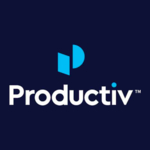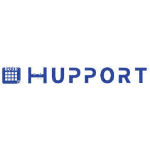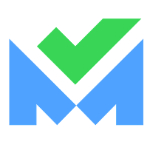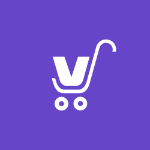List of Best SaaS Management Software
Showing 10 of 87 productsZluri is a leading software solution that helps businesses streamline their IT infrastructure, optimize operations, and achieve their full potential. With its user-friendly interface features, Zluri simplifies complex tasks and empowers organizations...Read Zluri Reviews
BetterCloud, is a solution for top-performing organizations, revolutionizes the way teams manage and secure their cloud applications and data. With a user-friendly interface and innovative features, BetterCloud streamlines processes and enhances prod...Read BetterCloud Reviews
SailPoint is a identity governance software that helps businesses manage and secure user access to critical data and applications. With its advanced features and user-friendly interface, SailPoint is the go-to solution for organizations looking to st...Read SailPoint Reviews
Productiv is a productivity tool for modern businesses. Designed to streamline workflows, increase efficiency, and optimize resources, Productiv is a game-changer in the world of business software. With its user-friendly interface and innovative feat...Read Productiv Reviews
Torii - your all-in-one solution for efficient software management. With Torii, keeping track of your businesss software and subscriptions has never been easier. Say goodbye to the hassle of manual tracking and hello to streamlined management with To...Read Torii Reviews
Blissfully, is a solution for managing your SaaS applications. Streamline your software management process with ease, all in one place. Say goodbye to endless spreadsheets and hello to simplified is a SaaS management. Experience the bliss of hassle-f...Read Blissfully Reviews
Hupport is a software thats changing the game in the world of business support. With its innovative features and user-friendly interface, Hupport is redefining the way businesses manage their support services. Say goodbye to traditional methods and h...Read Hupport Reviews
SalesBlink is a sales automation tool for businesses of all sizes. With its innovative features and user-friendly interface, SalesBlink simplifies the sales process and helps you close more deals in a fraction of the time. Say goodbye to tedious task...Read SalesBlink Reviews
VistaShopee is a software designed to elevate the online shopping experience. With its user-friendly interface and innovative features, VistaShopee simplifies the process of setting up and managing an online store. It offers a seamless platform for b...Read VistaShopee Reviews
Newsdata.io is a tool for accessing up-to-date news data. With this API, you can easily integrate the latest and most relevant news into your applications, websites, and research projects, saving time and effort. Stay informed and connect with your a...Read Newsdata.io API Reviews
- What Is SaaS Management Software?
- Top Reasons Why Businesses Need SaaS Management Software?
- What Are the Top Key Features of SaaS Management Software?
- What Are the Top Benefits of SaaS Management Software?
- What Are the Steps to Choose the Right SaaS Management Software?
- What Are the Types of SaaS Management Software for Different Industries?
- What Are the Technology Trends for Best SaaS Management Software?
- What Are the Deployment Options for SaaS Management Software?
What Is SaaS Management Software?
Software as a Service (SaaS) management software refers to a specific category of programs that are developed with the purpose of assisting business owners and managers in the oversight and control of their SaaS-based applications and services. Software as a Service (SaaS) refers to a category of software that is accessible via the internet and can be employed for a diverse range of functions.
SaaS management software enables enterprises to effectively administer their services and apps through the establishment of specific criteria, monitoring of utilization levels, and assessment of performance metrics. SaaS management software facilitates the monitoring of SaaS applications and services by enterprises, thereby contributing to the enhancement of security, dependability, and performance optimization.
Additionally, it can be beneficial to ascertain any potential complications with the applications or any other concerns. Moreover, it can facilitate the development of more streamlined, user-oriented procedures and manage the expenses linked to the Software as a Service (SaaS) applications.
The program enables business owners and managers to automate specific aspects of their program-as-a-Service (SaaS) offerings and applications, including user authorization, usage and access monitoring, and data analysis.
Additionally, it has the potential to offer valuable data regarding usage patterns and consumer feedback, thereby enhancing the overall user experience. SaaS management software can also assist enterprises in upholding adherence to industry norms and standards.
In general, SaaS management software is a robust solution that facilitates enterprises in optimizing their utilization of SaaS apps and services. The provision of enhanced visibility, increased efficiency, and enhanced cost control pertaining to applications enables enterprises to effectively pursue their goals and objectives.
Top Reasons Why Businesses Need SaaS Management Software?
1. Cost Savings: SaaS management software has the potential to yield substantial cost savings for enterprises, as it enables them to only pay for the specific capabilities they use and frequently adopts a pricing structure based on subscriptions.
2. Scalability: The utilization of Software-as-a-Service (SaaS) management software facilitates the seamless adjustment of resources in accordance with requirements, owing to its deployment on a cloud-based server infrastructure.
3. Automation: Numerous software-as-a-service (SaaS) management packages encompass automation solutions that effectively streamline operational processes, hence optimizing time and resource allocation for enterprises.
4. Security: A Software-as-a-Service (SaaS) management software has advanced security measures aimed at safeguarding business data and ensuring privacy.
5. Flexibility: Software-as-a-Service (SaaS) solutions are specifically engineered to possess a higher degree of flexibility in comparison to conventional software, hence enabling enterprises to promptly and effectively respond to evolving requirements.
6. Efficiency: The elimination of hardware and other IT infrastructure enables firms to achieve cost and time savings in relation to maintenance and upgrades.
7. Data Integration: A Software-as-a-Service (SaaS) management system has the capability to efficiently combine diverse datasets, thereby offering a comprehensive perspective of an organization.
8. Resource Management: Software-as-a-Service (SaaS) management software has the capability to offer a full overview of resources, facilitate efficient allocation of budgets, and optimize human resources (HR) operations.
9. Upgrades: The Software-as-a-Service (SaaS) solution has the inherent capability to be upgraded in order to offer more features and functionalities as required.
10. Collaboration: Software-as-a-Service (SaaS) solutions frequently include team management capabilities that facilitate enhanced collaboration and communication among users.
11. Customization: A Software-as-a-Service (SaaS) management system provides the flexibility to be customized in order to effectively address the requirements of a business.
12. Accessible: The software can be accessed by any team member from any device, provided that they have an internet connection.
13. Access Controls: Software as a Service (SaaS) management software facilitates the implementation of access controls, allowing enterprises to effectively regulate user permissions within the software.
14. Reporting & Analytics: Reports and analytics play a crucial role in enabling firms to identify and assess areas of underperformance, hence facilitating the formulation of strategic decisions.
15. Speed: The implementation of a Software-as-a-Service (SaaS) management system exhibits superior efficiency compared to conventional software, characterized by reduced development time and expedited deployment.
What Are the Top Key Features of SaaS Management Software?
The key features of a SaaS management software include:
1. Comprehensive Reports: Numerous software-as-a-service (SaaS) management solutions include extensive reports that facilitate the monitoring of operational activities. This encompasses several aspects such as client usage, performance, billing, storage, and other related factors.
2. Automated Payment Systems: Automated payment systems possess the capacity to enhance and optimize the payment procedure, guaranteeing punctual billing for all clientele and expeditious processing of refunds.
3. Scalability: The scalability of SaaS management software is a crucial attribute that enables it to accommodate the growth and expansion of an organization. This implies that the system should possess the capability to accept a larger number of consumers and incorporate supplementary functionalities in subsequent iterations.
4. User Permissions Management: Numerous software-as-a-service (SaaS) management solutions have the functionality to generate user accounts and allocate rights. This feature enables the user to effectively control and regulate access to sensitive data or functionalities, hence ensuring the security of the data.
5. Third-Party Integration: The integration of third-party services and applications, including as customer relationship management (CRM) systems, analytics tools, and accounting software, is a crucial feature that should be supported by SaaS management software. This will guarantee the flawless integration of all your software components.
6. Customer Support and Training: The provision of high-quality customer assistance is an essential requirement for any Software-as-a-Service (SaaS) management software. Seek out a service provider that gives comprehensive assistance and thorough instruction to its clientele.
7. Security and Compliance: It is imperative for software designed for SaaS administration to adhere to industry security standards and laws. This measure will guarantee the preservation of data integrity and security, as well as the maintenance of strict confidentiality regarding customers' personal information.
What Are the Top Benefits of SaaS Management Software?
1. Cost efficiency: Organizations can effectively mitigate expenses related to software acquisition, internal deployment, maintenance, and continuing support by leveraging a Software-as-a-Service (SaaS) management solution.
2. Quick Setup: Software-as-a-Service (SaaS) solutions exhibit a notable advantage over conventional software-based systems in terms of deployment speed. This expeditious deployment enables enterprises to promptly leverage the system's functionalities and benefits.
3. Scalability: Due to their cloud-based nature, SaaS solutions provide the advantage of facilitating seamless scalability in terms of user base and system capabilities, hence minimizing the need for substantial supplementary investments.
4. Accessibility: Software-as-a-Service (SaaS) solutions possess the capability to be accessed through any internet-connected device, hence enabling enterprises and their customers to derive advantages from the system regardless of their geographical location.
5. Automation: The incorporation of automated process management functionalities in numerous Software-as-a-Service (SaaS) solutions has the potential to substantially diminish labor expenses and enhance process efficiency for businesses by leveraging their current resources.
6. Security: Numerous Software-as-a-Service (SaaS) systems employ advanced security mechanisms in order to safeguard confidential customer data. This practice guarantees that enterprises are adhering to the regulatory criteria set by the government or industry, hence mitigating the likelihood of data breaches.
What Are the Steps to Choose the Right SaaS Management Software?
1. Establish Your Business Goals: Prior to selecting a Software-as-a-Service (SaaS) management software, it is imperative to evaluate the requirements of your enterprise and ensure a comprehensive understanding of your objectives.
Compile a comprehensive inventory of the essential attributes that the program must possess in order to facilitate the identification of an appropriate resolution.
2. Research Software Providers: Conduct an investigation into the diverse software companies that offer Software-as-a-Service (SaaS) management solutions. In order to make an informed decision on the optimal solution for your business, it is imperative to undertake a comprehensive analysis of several factors like features, cost, customer service, security, and user reviews.
3. Try Before You Buy: After the process of narrowing down your options, it is advisable to request a complimentary trial or demonstration of the software. Conduct thorough evaluations of the software's features, usability, and scalability to ascertain its suitability for meeting your requirements.
4. Consider Your Needs: Prior to finalizing a purchase decision, it is imperative to ascertain the compatibility of the software solution with other programs in use and its ability to integrate seamlessly with existing systems.
Additionally, it is crucial to evaluate the pricing in relation to the scalability of the software.
5. Compare Pricing Options: In order to optimize cost efficiency, it is advisable to do a comparative analysis of various pricing packages, including annual plans and one-time usage rates.
Furthermore, it is advisable to investigate whether the service provider offers extended contractual agreements or month-to-month options.
6. Review Support Services: Examine the testimonials provided by customers and take into account supplementary customer support services provided by the software provider, including training and technical assistance.
7. Make Your Decision: Upon conducting extensive research on various software solutions, it is imperative to thoroughly assess the features, resources, and support provided by each option in order to ascertain the most suitable fit for your business.
What Are the Types of SaaS Management Software for Different Industries?
The diversity of SaaS management software across businesses is contingent upon the distinct requirements of each sector or organization. For instance, businesses such as healthcare, banking, and manufacturing may utilize HR and talent management software to monitor and manage many aspects of employee performance, including payroll, benefits, and other related functions.
Collaboration is the act of working together with others towards a common goal or objective. Software as a Service (SaaS) technologies have the potential to enhance collaboration and improve efficiency among teams operating in various areas, including IT and marketing. Project management software is available in various forms and dimensions, which vary according to the specific industry.
This software serves multiple purposes, including budgeting, resource allocation, quality assurance, and milestone tracking. SaaS tools find utility in various aspects of the hospitality industry, including reservation systems, customer relationship management, inventory management, and revenue management.
In the realm of banking and financial services, there are specialized software-as-a-service (SaaS) applications that cater to the needs of fraud detection, biometrics authentication, and compliance monitoring.
The manufacturing industry often employs software applications designed for enterprise resource planning, monitoring the utilization of assets and materials inside the plant premises, as well as facilitating customer-specific production planning.
SaaS tools are commonly employed within the retail industry to enhance several aspects of operations, including supply chain optimization, demand forecasting, omnichannel marketing, and analytics. In summary, the selection of SaaS management software for various businesses is contingent upon their respective requirements and industry-specific exigencies.
What Are the Technology Trends for Best SaaS Management Software?
The technology trends for best SaaS management software focus on three topics: The key areas of focus include cloud-based management, data security, and user experience. Cloud-based management refers to the capability of remotely accessing files, utilizing software, and conducting information processing through online platforms.
This enables organizations to decrease their dependence on tangible infrastructure, while also facilitating enhanced scalability, as enterprises can promptly adapt their computer resources to accommodate evolving demands. The significance of data security lies in its role of safeguarding consumer information and ensuring adherence to data privacy standards.
In order to protect the security of data, it is imperative for SaaS management solutions to incorporate advanced encryption and authentication mechanisms. The significance of customer experience in SaaS software cannot be overstated, since enterprises depend on it to ensure client retention and for corporate expansion.
The system should possess the capability to offer valuable insights into client behavior, propose automation procedures, and ensure a cohesive user experience across various devices.
What Are the Deployment Options for SaaS Management Software?
The deployment options for SaaS management software will typically depend on the specific product and vendor.
However some of the common deployment options for SaaS management software include:
1. On-premises: The process of installing the software on the customer's personal devices or servers. This feature empowers customers to retain autonomy over their system and provides a heightened level of security and adaptability within the environment.
2. Public cloud: This entails the implementation of the program on servers hosted by a third-party cloud provider, such as Amazon Web Services (AWS), Microsoft Azure, or Google Cloud Platform.
This enables consumers to delegate the expenses associated with hosting to the service provider, while also providing the flexibility to adjust the size of resources in accordance with their requirements.
3. Private cloud: The deployment in question might be characterized as an on-premises implementation that is customized to meet the unique requirements of the customer. This service enables users to leverage the scale and cost-efficiency of the public cloud while maintaining control and ensuring security.
4. Hybrid cloud: This entails leveraging both public and private clouds to capitalize on the advantages offered by each. Customers have the ability to store their highly sensitive data in their private cloud infrastructure, while simultaneously leveraging the public cloud infrastructure for less critical operations.










